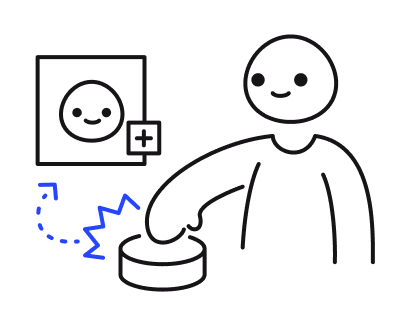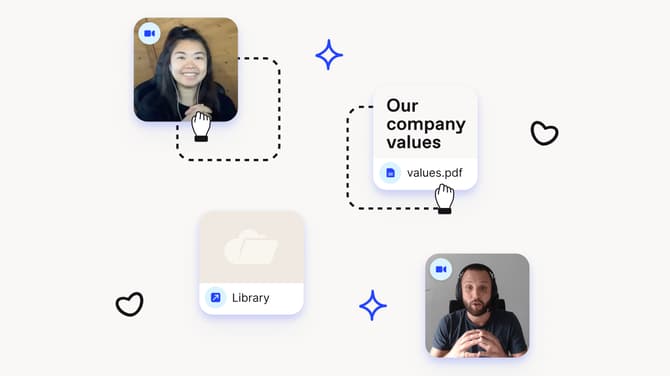Streamline, organize, and automate your onboarding process like magic.

What's in this article
It’s safe to say that the COVID-19 pandemic caused companies worldwide to adjust their day-to-day operations.
Organizations had to learn how to mitigate hard times with flexible and easily implemented strategies. And while changes are never easy, they can also be seen as opportunities for companies to re-evaluate their internal processes in order to do things better.
Many companies have been forced to adopt remote working structures to keep their businesses afloat. And so, HR are now having to rethink the traditional onboarding experience in order to create engaging, personal and positive onboarding experiences remotely.
Remote onboarding differs from traditional in-person onboarding most of us are accustomed to, as it requires a different approach and skillset—the lack of face-to-face interaction greatly affects the dynamic, pace and scale of the whole experience.
One of the challenges can be the disconnect with the company’s culture, given that new hires do not have the opportunity to be in physical surroundings that embody a company’s spirit and values.
Continuing to set new employees up for success, HR people have to be creative and leverage new technologies to ensure a full and genuine remote onboarding experience.
Why Employee Onboarding Is Even More Crucial Remotely
In our previous article, 4 Essential Onboarding Checklists for New Employees, we highlight the positive impact that great onboarding experiences can have for both short and long-term employee dynamics—ultimately benefiting an organization’s continued financial and structural stability.
87% of HR leaders believe that improving employee retention rates will be critical for business survivability, especially within the next five years. In the context in which a physical workplace is no longer the norm, providing a positive employee experience remotely is now more important than ever.
Establishing a strong first impression when welcoming newcomers to the team is just as critical now as it was before—except that it may require a different approach since it's done remotely.
How to Adapt Your Employee Onboarding Process to Remote
In a remote or hybrid companies, most new hires are not physically entering a company’s offices—and, by default, cannot be immersed into a cultural environment organically—it needs a little more elbow grease towards creating an engaging initiation, where remote employees can feel just as connected to their employer and peers as if they were there in person.
Below, you’ll find ways in which HR managers can adapt the key stages of onboarding to be more sensible and practical when it comes to the remote onboarding experience:
Pre-Boarding
- Equipment Support: Before remote onboarding even begins, it is imperative for newcomers to have all the tools required to set up a home office. This includes equipment (from laptop to headset) and software.
- IT Assistance: To ensure seamless access to company resources needed on the first day of employment, hiring managers should make sure that new employees are provided with the right contacts for any help setting up equipment, softwares, logins, and so on.
- Employee Access: HR managers have to determine which company resources will need to be accessed by newcomers and ensure all information pertaining to this is shared beforehand.
- Two-Week Schedule: Managers should build a detailed agenda outlining meetings and one-on-one moments—including all activities newcomers are to partake in, such as training sessions with videos and appropriate links, as well as ice-breaker meet-and-greets to balance out the days. Looking for inspiration to build the your first two-week schedule? Have a look at our onboarding templates.
- Mentor and Buddy: To enhance the integration process of new hires alongside their peers and within the company culture, matching them up with a work mentor as early as the pre-boarding stage is a good tactic.
Onboarding
- Documents and Training: To help familiarize newcomers with the company directory and network, provide a list of all key members within the organization that the new hires might eventually need to get in touch with. This list can include—but is not limited to—direct reports or supervisors, mentors, peers part of the same team or project, and representatives of key departments (such as the IT department).
Ensure that all important company documents are easily accessible including the employee handbook, code of conduct, policies and procedures, etc. - Virtual Face-To-Face Introductions: As previously mentioned, the reality of working from home means that employees do not have the same opportunities to meet and connect face-to-face organically as they would have in an office setting, while grabbing lunch or bumping into each other at the coffee machine.
One way to overcome this gap is by making an effort in scheduling introductory calls for every newcomer to meet the colleagues they will be working with. This will help add a feeling of human connection behind screen names and email signatures. - Connect people: Besides having a mentor, it is always beneficial to assign a buddy to a new hire. Given that both have lived through similar experiences in a relatively close time frame, it tends to be easier to build employee rapport through such pairing.
For example, Workleap has created an ambassador community of volunteer buddies, responsible for facilitating the integration of new hire. Positive relationships between peers within the workspace is proven to increase employee engagement. - Check Ins: HR and team managers should always be in close contact with newcomer throughout hiring and onboarding. A good practice would be to organize weekly check-ins during the first month, bi-weekly check-ins for the second and third month, and monthly meetings thereafter.
Key Components of an Effective Remote Onboarding Process
While employees are physically separated from their team and office environment, it can be easy to feel disengaged or bear the emotional tax of self-isolation—especially for newcomers who have not had the chance to forge organic relationships with their colleagues and experience the company spirit first-hand.
Below are a few additional practices HR managers can adopt for an uncompromising onboarding experience, even if remote:
- Virtual Socials: Sharing a lunch break with colleagues is a cornerstone bonding activity within any work space. Managers can also host a virtual cocktail hour with the team on a periodic basis, where new and current employees can get to know each other in a more relaxed setting.
At Workleap, employees are invited to enjoy their morning brew together by remotely signing in to a virtual coffee server on Discord. To replace team building outings, managers can organize online group games, such as trivia competitions.
- Open-Screen Policy: Managers can reserve 15-minute time slots throughout their weekly schedules, inviting new employees to “pop up” on screen and connect within any of those allotted times.
- Tech Upgrades: Leveraging new tools and technology can help in a time where businesses are transitioning all activities online and becoming increasingly reliant on virtual communication.
- Making up for Lost Proximity: While video conferences and virtual hangouts are a partial solution to help establish more human interactions, they still come with limitations. To humanize virtual meetings even further, allocate time to personal sharing. This doesn’t have to take up much time—five minutes before or at the end of each meeting to allow peers to share their weekend plans, for example, can really make a difference.
These small yet impactful moments show consideration, help bridge the omnipresent digital divide, and allow newcomers to gain a deeper understanding of their colleagues’ personalities.
Workleap encourages connections with colleagues outside of their core teams in a similar fashion, with a simple questionnaire for new hires to fill ou—detailing their personal passions, past experiences, and funny anecdotes—which is in turn shared internally on the day of their arrival.
Final Thoughts
Well-thought-out onboarding is especially important for remote employees, given the physical limitations and lack of opportunities to organically bond with peers and integrate within the company culture.
At the end of the day, the key is to build engagement with new hires and help them establish positive relationships with the team by leveraging creativity and technology, and adopting the right digital communication tools to facilitate this.
Structure and automate your onboarding journey so newcomers hit the ground running.




